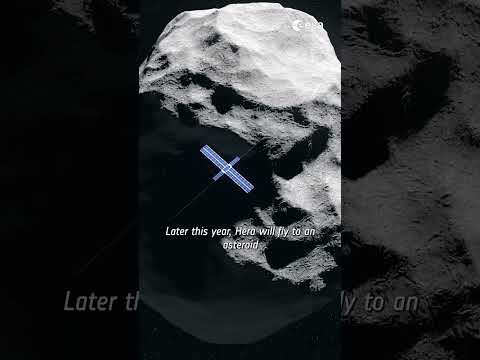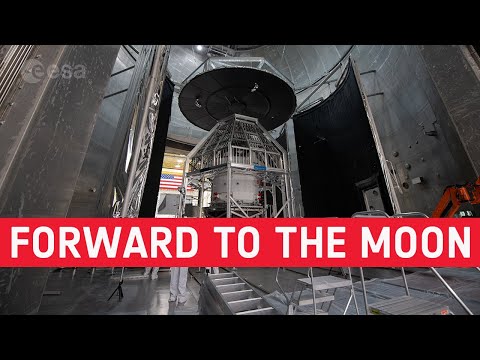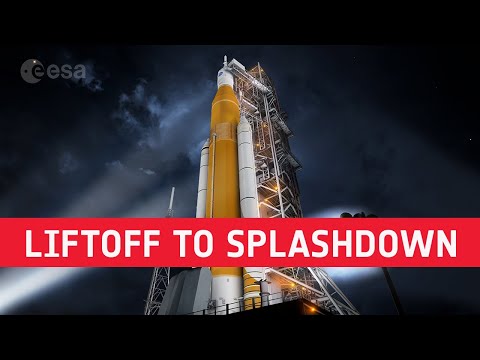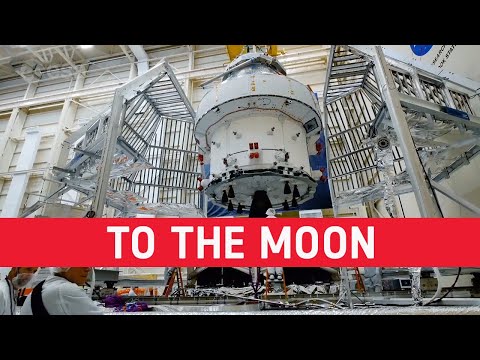Preparing Orion for thermal vacuum testing
A timelapse video of the Orion spacecraft with European Service Module getting ready for thermal vacuum testing at NASA’s Plum Brook Station. The first Orion will fly farther from Earth on the Artemis I mission than any human-rated vehicle has ever flown before – but first it will undergo testing to ensure the spacecraft withstands the extremes of spaceflight.
Here at NASA’s Plum Brook Station in Ohio, USA, Orion is being put into a thermal cage in preparation of getting its first feel of space in the world’s largest thermal vacuum chamber.
Orion will be subjected to temperatures at Plum Brook ranging from –175°C to 75°C in vacuum for over two months non-stop – the same temperatures it will experience in direct sunlight or in the shadow of Earth or the Moon while flying in space.
Orion is being placed in a cage, called the Thermal Enclosure Structure (TES), that will radiate infrared heat during the tests inside the vacuum chamber.
The tests that will run for two months will show that the spacecraft works as planned and adheres to the strictest safety regulations for human spaceflight. The European Service Module has 33 thrusters, 11 km of electrical wiring, four propellant and two pressurisation tanks that all work together to supply propulsion and everything needed to keep astronauts alive far from Earth – there is no room for error.
Learn more about Orion: http://bit.ly/ESAOrion
Directed by Stéphane Corvaja/ESA
Edited by Manuel Pédoussaut/Zetapress
★ Subscribe: http://bit.ly/ESAsubscribe and click twice on the bell button to receive our notifications.
Check out our full video catalog: http://bit.ly/SpaceInVideos
Follow us on Twitter: http://bit.ly/ESAonTwitter
On Facebook: http://bit.ly/ESAonFacebook
On Instagram: http://bit.ly/ESAonInstagram
On Flickr: http://bit.ly/ESAonFlickr
We are Europe’s gateway to space. Our mission is to shape the development of Europe’s space capability and ensure that investment in space continues to deliver benefits to the citizens of Europe and the world. Check out http://www.esa.int/ESA to get up to speed on everything space related.
Copyright information about our videos is available here: http://www.esa.int/spaceinvideos/Terms_and_Conditions
#ESA
#Orion
#ForwardToTheMoon





A imponência desta máquina …Os cientistas parecem anões!! A azáfama é grande e os testes são importantes para por à prova …Para que nada se perca no vácuo!! A missão que seja mais uma vitória com o nome ORION e que o Alfa seja o caminho para o Ómega ….um final feliz para todos que trabalharam nesta inovadora missão!! Como o universo é tão inspirador?!!!
Good job esa. Also I can’t wait for the launch
I like the you make esa because in the one you make like a rest and brain work music sound
The hell is a thermal vacuum? 🤣
I´m sooooo hyped to see the Launch of Orion too and its flight to the Moon and beyond !
For all those who think SpaceX makes it look "easy", Musk would be first to tell you SPACE IS HARD. Space is also very LETHAL especially translating through the atmosphere on ascent or reentry. Humanity has been lucky so far no one has been critically injured or killed in orbit. That is from the massive amount of testing, simulation, experience, and safety culture. But as we get more humans is orbit or to Moon/Mars, accidents and fatalities are coming, but not through the lack of testing and preparation.
🚀🌚See you soon!
I always wondered what percentage of NASA's overall budget when to the employees and scientists' salaries, who design, build, test and launch these amazing craft?
Thanks for this video!👍👍
Guys, c'mon, you have to add some highlights text or at least some background music.
Amazing!👍😮